About Blue Ghost Lander:
The Blue Ghost Lander is a spacecraft developed by Firefly Aerospace to deliver scientific payloads to the Moon. It is designed to land on the lunar surface and deploy a variety of instruments and experiments, advancing scientific exploration of the Moon. This lander will be part of NASA’s Lunar Surface Operations Program and the Artemis mission, which aims to return humans to the Moon and establish sustainable exploration.
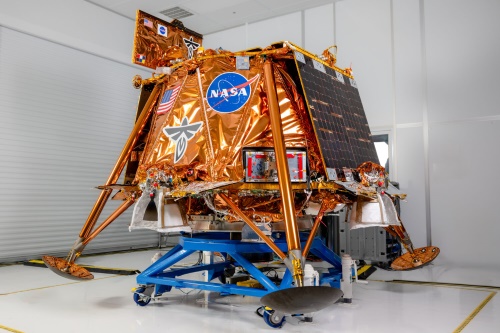
Source: fireflyspace
Look at that view! Blue Ghost is now separated from the launch vehicle and our road trip to the Moon has officially begun! Stay tuned as we look to acquire signal to the lander within the next 30 minutes. #BGM1 https://t.co/q0lnKKQrjG
— Firefly Aerospace (@Firefly_Space) January 15, 2025
What are the Key Features of the Blue Ghost Lander?
Features of Blue Ghost Lander are:
- Landing Technology: The Blue Ghost Lander is equipped with advanced landing technologies that ensure a soft, precise landing on the lunar surface.
- Payload Capacity: It is designed to carry multiple scientific payloads, such as rovers, research equipment, and technology demonstrations.
- Autonomy: The lander will operate autonomously on the Moon, using onboard systems to execute its mission with minimal human intervention.
- Scientific Instruments: The payloads it carries will gather crucial data to enhance our understanding of lunar resources, geology, and surface conditions.
What are the main Objectives of the Blue Ghost Lander?
The primary goal of the Blue Ghost Lander is to deliver scientific and commercial payloads to the lunar surface. Some of its specific objectives include:
- Supporting NASA’s Artemis Program: The lander will contribute to NASA’s broader objectives for lunar exploration.
- Technological Demonstration: It will demonstrate the ability of private companies, like Firefly Aerospace, to perform lunar landings with precision.
- Enabling Lunar Science: It will carry scientific instruments to study the Moon’s surface and environment, which is vital for future manned lunar missions.
What is the Significance of the Blue Ghost Lander?
The Blue Ghost Lander represents a significant milestone in private sector participation in space exploration, particularly lunar missions. It will:
- Enhance Lunar Research: By carrying cutting-edge scientific payloads, the lander will help expand humanity’s understanding of the Moon.
- Facilitate Future Moon Missions: Its successful operation could lay the groundwork for future lunar missions, both scientific and commercial, especially with the development of infrastructure for sustainable lunar exploration.
- Private Sector Growth in Space Exploration: It demonstrates the growing capability of private companies to contribute to complex space missions, reducing reliance on government entities like NASA.
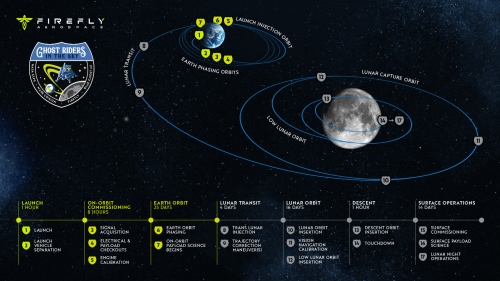
Source: fireflyspace
Blue Ghost Lunar Landers Specifications
Blue Ghost Lunar Landers Specifications in details:
| Feature | Details |
| Height | 2 m (6.6 ft) |
| Diameter | 3.5 m (11.5 ft) |
| Payload Capacity | 155 kg to surface, 2,700 kg to orbit |
| Power | 300 W nominal, 650 W peak |
| Imagery | 360° HD |
| Landing Legs | 4 shock-absorbing legs |
| Thermal Control | Heat pipes, radiators, insulation |
| Uplink / Downlink | DTE or through relay |
| Communication | 6 Mbps downlink, 0.2 kbps uplink |
| Payload Mounting | Above Deck: 3+ sqm, Mid-Deck: 4+ sqm, Below Deck: 2+ sqm |
Mission 1: "Ghost Riders in the Sky" (2025)
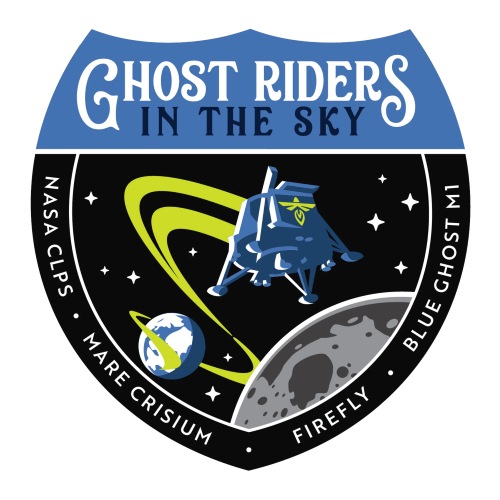
Source: fireflyspace
Key Mission Details
- Launch Date: January 15, 2025
- Landing Date: March 2, 2025
- Landing Location: Near Mare Crisium, near Mons Latreille
- Mission Duration: ~45 days (14 Earth days of surface operations)
- Primary Objectives:
- Investigate heat flow from the lunar interior.
- Analyze surface regolith.
- Perform technology demonstrations like regolith sampling, dust mitigation, and GNSS tests.
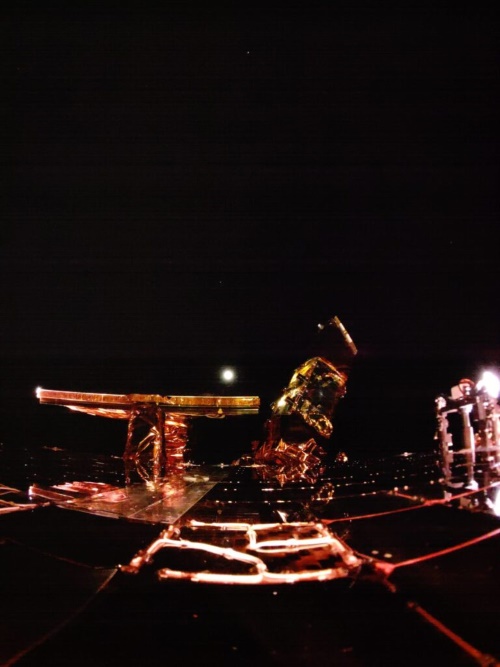
Source: fireflyspace
Mission Highlights
- Launch Vehicle: Falcon 9 (SpaceX)
- Launch Site: Kennedy Space Center, USA
- Landing Site: Mare Crisium (critical geological insights into lunar regolith and solar wind interactions)
- Post-Landing Operations:
- Surface data collection
- Radiation-tolerant computing
- Lunar dust management
Upcoming Blue Ghost Missions
Blue Ghost Mission 2 (2026)
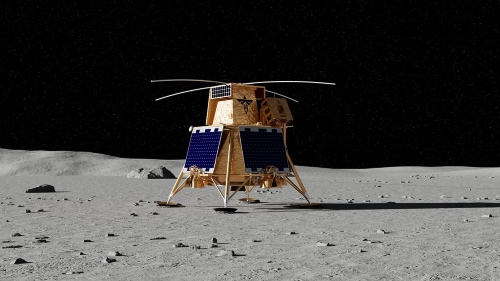
Source: fireflyspace
- Launch Year: 2026
- Spacecraft: Blue Ghost lunar lander, Elytra orbital vehicle
- Landing Location: Far side of the Moon
- Mission Type: Payload services in lunar orbit and surface operations
Key Features:
- Deployment of the Lunar Pathfinder Satellite (ESA)
- Payload operations and lunar surface mobility
Blue Ghost Mission3: "Exploring the Gruithuisen Domes" (2028)
- Mission Name: Blue Ghost Mission 3
- Launch Date: 2028
- Landing Location: Gruithuisen Domes, Moon's Near Side (Gamma Dome)
- Mission Duration: 14+ days of surface operations
- Spacecraft: Blue Ghost lunar lander, Elytra Dark orbital vehicle
- Mission Type: Lunar exploration and payload deployment
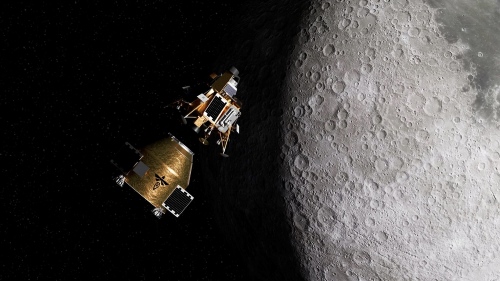
Source: fireflyspace
Primary Objectives
- Geological Mapping: Investigate the unique composition of the Gruithuisen Domes, with a focus on the Gamma Dome, a region rich in silica-based volcanic minerals.
- Search for Water: Analyze the possibility of lunar water and hydrogen molecules within the dome's materials.
- Sample Acquisition: Test and demonstrate new technologies for acquiring lunar surface samples.
- Radio Emissions Analysis: Characterize planetary, solar, and galactic radio emissions on the lunar surface to understand lunar dynamics and space weather.
Mission Highlights
- Launch Vehicle: Falcon 9 (SpaceX)
- Launch Site: Kennedy Space Center, USA
- Landing Site: Gruithuisen Domes – A mysterious region with ancient lava flows and possible lunar water deposits.
Technological Capabilities and Innovation
Firefly’s Blue Ghost is designed using vertically integrated components across its entire vehicle lineup. This integration ensures:
- Cost Efficiency: Shared components reduce costs and increase reliability.
- Robust Facilities: Firefly operates a 50,000 sq ft spacecraft facility with a 2,500 sq ft ISO8 cleanroom.
- In-House Manufacturing: Blue Ghost is designed, built, and tested in-house, ensuring quick adaptation to mission schedules.
End-to-End Cislunar Services
Firefly’s Blue Ghost offers seamless operations for both lunar and orbital missions, including:
- Launch Services: Compatible with multiple launch providers for flexible missions.
- Lunar and Orbital Support: Through the Elytra vehicle, enabling long-haul communications, space domain awareness, and interplanetary transport.
- Payload Operations: Power, thermal resources, and data services for payloads during lunar transit and surface operations.
What are the Challenges and Innovations of this Mission?
The Blue Ghost Mission faces several operational and technological challenges, including the extreme environmental conditions of the Moon and deep space, and the need for systems to operate reliably over long durations without human intervention. Effective collaboration with NASA and international space agencies will be key to addressing these challenges.
Key Challenges
- Harsh Space Environment: Systems must withstand extreme temperatures, radiation, and lunar dust.
- Long-duration Missions: Ensuring reliability for extended operations without human intervention.
- Collaboration: Partnerships with NASA and other agencies for mission success.
Conclusion
The Blue Ghost Lander will be a crucial element in the ongoing exploration of the Moon, providing valuable data and supporting NASA's Artemis Program. By showcasing private sector innovation and technological advancements, it marks an important step in making lunar exploration more accessible and sustainable.
Comments
All Comments (0)
Join the conversation